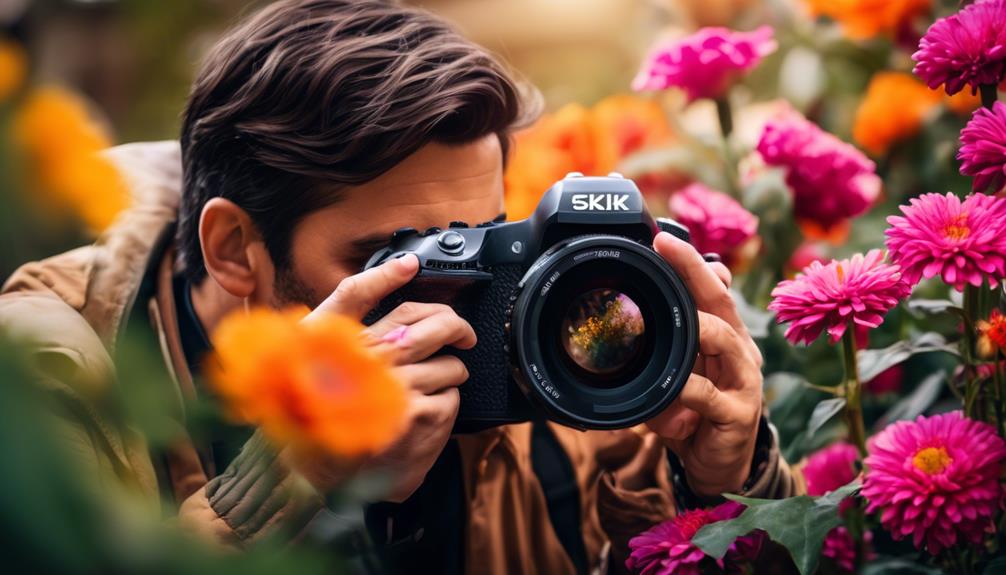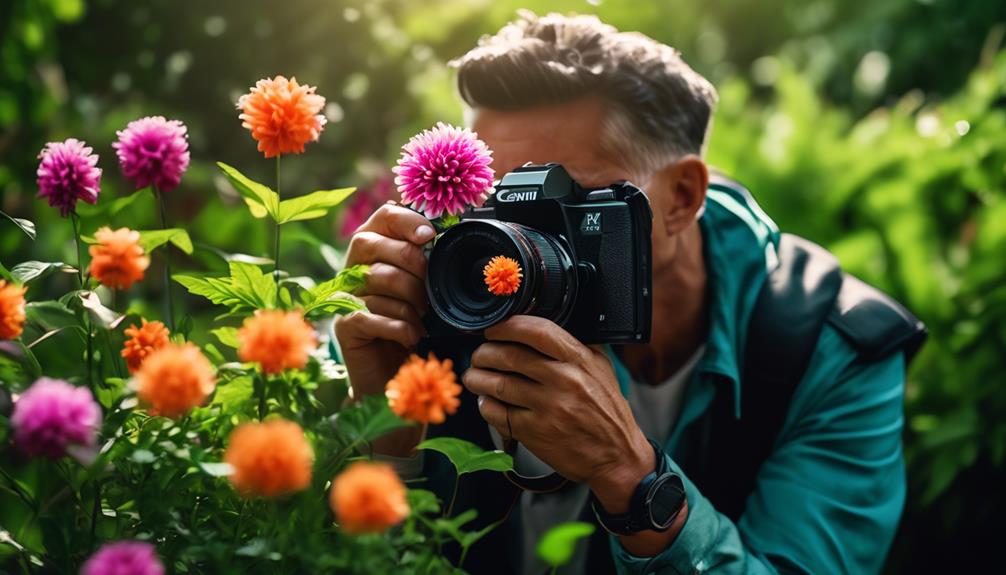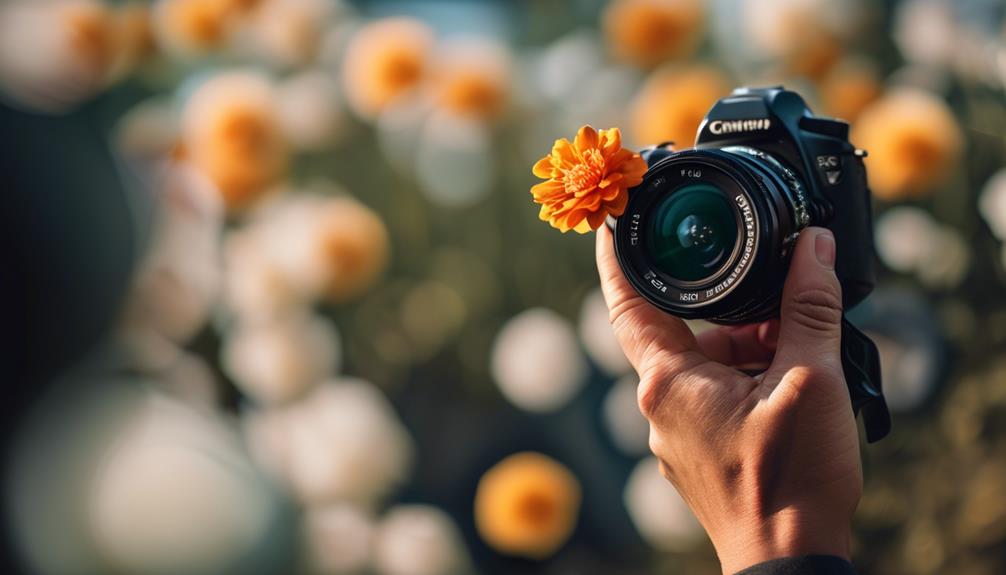Please note this post may contain affiliate links picked by me (Jay) that I have deemed may be of interest or relevant to you the reader of this.
These links do not affect the cost of the thing if you decide to purchase but i may get a little money if you choose to purchase.
For more information on my affiliate link policy click here.
Like a painter with a palette of colors, photographers have the power to control depth of field to create stunning and captivating images.
Welcome to the world of controlling depth of field in photography, where each click of the shutter brings a moment to life with precision and artistry.
In this guide, I will take you on a journey through the intricacies of aperture, focusing techniques, lens selection, and the creative possibilities that lie within the realm of depth of field.
So, get ready to unlock the secrets behind achieving that perfect balance between sharpness and blur, as we delve into the fascinating world of controlling depth of field.
Key Takeaways
- Depth of field is essential for capturing stunning and professional-looking photographs.
- Aperture settings play a significant role in controlling depth of field, with wide apertures creating a shallow depth of field and narrow apertures increasing the depth of field.
- Focal length also affects depth of field, with longer lenses having shallower depth of field.
- Manipulating depth of field allows for creative possibilities, such as isolating subjects, capturing the entire landscape, and adding layers and depth to images.
Understanding Depth of Field
When it comes to capturing stunning photographs, understanding depth of field is essential. It's the concept that allows you to control what appears sharp and in focus in your images. Whether you're shooting landscapes or macro photography, mastering depth of field will take your pictures to the next level.
In landscape photography, depth of field plays a crucial role in creating captivating images. By adjusting your aperture, you can control the amount of the scene that's in focus. A smaller aperture, such as f/16 or f/22, will result in a larger depth of field, ensuring that both the foreground and background are sharp. This is particularly useful when you want to capture the vastness of a landscape, with every detail in focus, from the flowers in the foreground to the distant mountains.
On the other hand, in macro photography, depth of field becomes even more critical. When you're shooting small subjects up close, such as flowers or insects, the depth of field becomes extremely shallow. To maximize sharpness in your macro shots, it's essential to use a small aperture and focus carefully on the subject. By choosing an aperture of around f/8 or higher, you can achieve a greater depth of field, ensuring that more of your subject is in focus.
Understanding depth of field is the key to creating visually striking images in both landscape and macro photography. By manipulating the aperture and focusing techniques, you can control what elements stand out in your photos.
Aperture and Its Effect on Depth of Field
To fully understand how to control depth of field in photography, it's essential to grasp the concept of aperture and its significant effect on the sharpness and focus of your images. Aperture settings play a critical role in determining the amount of light that enters your camera and ultimately affects the depth of field in your photographs. Let's delve into the fascinating world of aperture and discover how it can help you achieve those beautifully blurred backgrounds and create captivating images.
- Wide open aperture: Imagine standing in a lush garden with vibrant flowers all around you. By using a wide open aperture, you can isolate a single flower and blur the background, allowing it to become a dreamy, colorful bokeh. The subject becomes the star of the show, while the distractions fade away into a soft, creamy blur.
- Narrow aperture: Now picture yourself capturing a breathtaking landscape during golden hour. By using a narrow aperture, you can achieve a deep depth of field, ensuring that everything from the foreground to the distant mountains remains sharply focused. Every detail, from the blades of grass to the distant peaks, becomes crystal clear, resulting in a visually stunning image.
- Selective focus: Imagine being at a bustling city street, surrounded by people and activity. By using a selective focus technique with a moderate aperture setting, you can choose a specific subject to be in sharp focus while blurring the surrounding elements. This technique allows you to tell a story, drawing the viewer's attention to the main subject amidst the chaos of the city.
Mastering aperture settings opens up a world of creative possibilities in photography. By understanding how to control the size of your camera's aperture, you can manipulate the depth of field and create images that are visually striking and captivating. So go ahead and experiment with different aperture settings, and watch as your photographs come to life with beautifully blurred backgrounds and a sense of artistic innovation.
Focusing Techniques for Controlling Depth of Field
Let me share with you some effective focusing techniques that will allow you to have complete control over the depth of field in your photographs. Whether you're into macro photography, capturing intricate details up close, or landscape photography, showcasing the vastness of the world around us, mastering these techniques will elevate your images to new heights.
To help you understand the different focusing techniques for controlling depth of field, I've prepared a table that outlines three popular methods:
| Focusing Technique | Description | Best Use |
|---|---|---|
| Single Point Focus | This technique allows you to focus on a specific point in your frame, giving you precise control over depth of field. | Macro Photography |
| Zone Focusing | By setting your focus to a specific distance range, you can ensure that everything within that range is sharp and in focus. | Landscape Photography |
| Focus Stacking | This advanced technique involves capturing multiple images of the same scene, each with a different focus point, and then blending them together in post-processing. | Macro Photography |
By understanding and applying these techniques, you can manipulate the depth of field to create stunning images that draw the viewer's eye exactly where you want it to go. Whether you want to isolate a small subject with a shallow depth of field or capture the entire landscape with a wide depth of field, these focusing techniques will give you the control you need.
Now that you know these techniques, it's time to put them into practice and experiment with different scenarios. By combining your newfound knowledge with your creativity, you'll be able to capture breathtaking images that truly stand out. So grab your camera and get ready to take your photography to the next level!
Choosing the Right Lens for Desired Depth of Field
Choosing the right lens is essential for achieving the desired depth of field in your photographs, allowing you to capture images that truly showcase your creative vision. The lens you choose will determine how much of your scene is in focus, and can greatly impact the overall impact of your photos.
Here are some key factors to consider when selecting a lens for depth control:
- Aperture: The aperture of a lens plays a crucial role in determining depth of field. A wide aperture, such as f/1.4 or f/2.8, will create a shallow depth of field, with only a small portion of the image in focus. On the other hand, a smaller aperture, like f/11 or f/16, will result in a larger depth of field, with more of the image in focus. Consider the look you want to achieve and choose a lens with the appropriate aperture range.
- Focal Length: The focal length of a lens also affects depth of field. In general, longer focal lengths, such as 85mm or 200mm, tend to have a shallower depth of field, while shorter focal lengths, like 24mm or 35mm, offer a larger depth of field. Keep in mind that the distance between your subject and the background also plays a role, so experiment with different focal lengths to find the right balance.
- Lens Type: Different types of lenses, such as prime lenses or zoom lenses, can provide different depth of field effects. Prime lenses, with their fixed focal length, often have wider maximum apertures, allowing for more control over depth of field. Zoom lenses, on the other hand, offer versatility in focal length but may have narrower maximum apertures. Consider your shooting style and the type of images you want to create when choosing a lens.
Creative Use of Depth of Field in Photography
One of the most exciting aspects of photography is the creative use of depth of field. It allows me as a photographer to bring my subjects to life and capture stunning images with a sense of depth and dimension.
This is where bokeh photography and shallow focus techniques come into play. Bokeh photography refers to the aesthetic quality of the out-of-focus areas in an image. It's characterized by soft, blurred backgrounds that create a dreamy and artistic feel. By using a wide aperture and a lens with a shallow depth of field, I can achieve this effect. The result is a subject that pops out from the background, drawing the viewer's attention and creating a captivating image.
Shallow focus techniques involve intentionally limiting the depth of field to a small area, leaving the rest of the image blurred. This technique is often used to highlight a specific subject or detail while minimizing distractions in the background. By controlling the focus and depth of field, I can guide the viewer's eye to exactly where I want it to go, emphasizing the important elements of the photo.
Creative use of depth of field allows me to experiment with different compositions and perspectives, adding a unique touch to my photography. It gives me the opportunity to play with foreground and background elements, creating layers and adding depth to my images. Whether I want to capture a close-up portrait with a beautifully blurred background or a landscape with a sharp foreground and a soft background, mastering depth of field techniques opens up a world of possibilities for my creative vision.
Innovation in photography often lies in the ability to think outside the box and push the boundaries of traditional techniques. By exploring and experimenting with bokeh photography and shallow focus techniques, I can create images that are visually striking and provoke a sense of wonder. So, let's embrace the creative potential of depth of field and capture images that truly stand out.
Frequently Asked Questions
What Are Some Common Mistakes to Avoid When Trying to Control Depth of Field?
When it comes to controlling depth of field in photography, there are some common mistakes to avoid if you want to achieve the desired effect.
One mistake is using the wrong aperture setting, which can result in a shallow or deep depth of field when you're aiming for the opposite.
Another mistake isn't considering the distance between your subject and the background, as this can greatly affect the depth of field.
How Does the Distance Between the Subject and the Background Affect Depth of Field?
When it comes to controlling depth of field in photography, the distance between the subject and the background plays a crucial role.
The closer the subject is to the background, the shallower the depth of field will be. This means that the subject will be in sharp focus while the background will be blurred, creating a beautiful bokeh effect.
On the other hand, if the subject is far away from the background, the depth of field will be deeper, resulting in more of the scene being in focus.
Can Depth of Field Be Adjusted in Post-Processing?
Yes, depth of field can be adjusted in post-processing.
However, there are pros and cons to using this method.
On the positive side, post-processing allows for precise control over the depth of field, giving photographers the ability to create a desired effect.
However, it's important to note that the results may not be as natural as achieving shallow depth of field in-camera.
Exploring alternative methods, such as using wide aperture lenses or shooting at a close distance to the subject, can also achieve a shallow depth of field without relying on post-processing.
What Are Some Advanced Techniques for Achieving a Shallow Depth of Field?
Achieving a shallow depth of field in photography is all about creativity and pushing the boundaries. By using advanced techniques, I can create stunning images with a beautiful bokeh effect.
Experimenting with wider apertures, longer focal lengths, and getting close to the subject can help to isolate it and blur the background.
Additionally, using fast lenses and understanding the relationship between distance, focal length, and aperture can take your depth of field control to the next level.
Get ready to capture some truly mesmerizing shots!
Are There Any Specific Camera Settings That Can Help in Controlling Depth of Field?
There's a secret to achieving that dreamy, blurred background in your photos. It's all about controlling depth of field.
And guess what? There are specific camera settings that can help you do just that. By adjusting your camera aperture and playing with focal length, you can create stunning images with a beautifully shallow depth of field.
It's like having a magic wand that lets you highlight your subject while softly blurring the background.
Trust me, it's a game-changer for your photography.
Conclusion
After exploring the concept of depth of field in photography, it becomes clear that it's a powerful tool for creating visually captivating images.
By understanding how aperture and focusing techniques can affect depth of field, photographers can effectively control what elements of their subject are in focus and what's blurred.
Additionally, choosing the right lens can further enhance the desired depth of field effect.
With creativity and practice, photographers can use depth of field to add depth and dimension to their photographs, resulting in stunning visual representations of their ideas.


